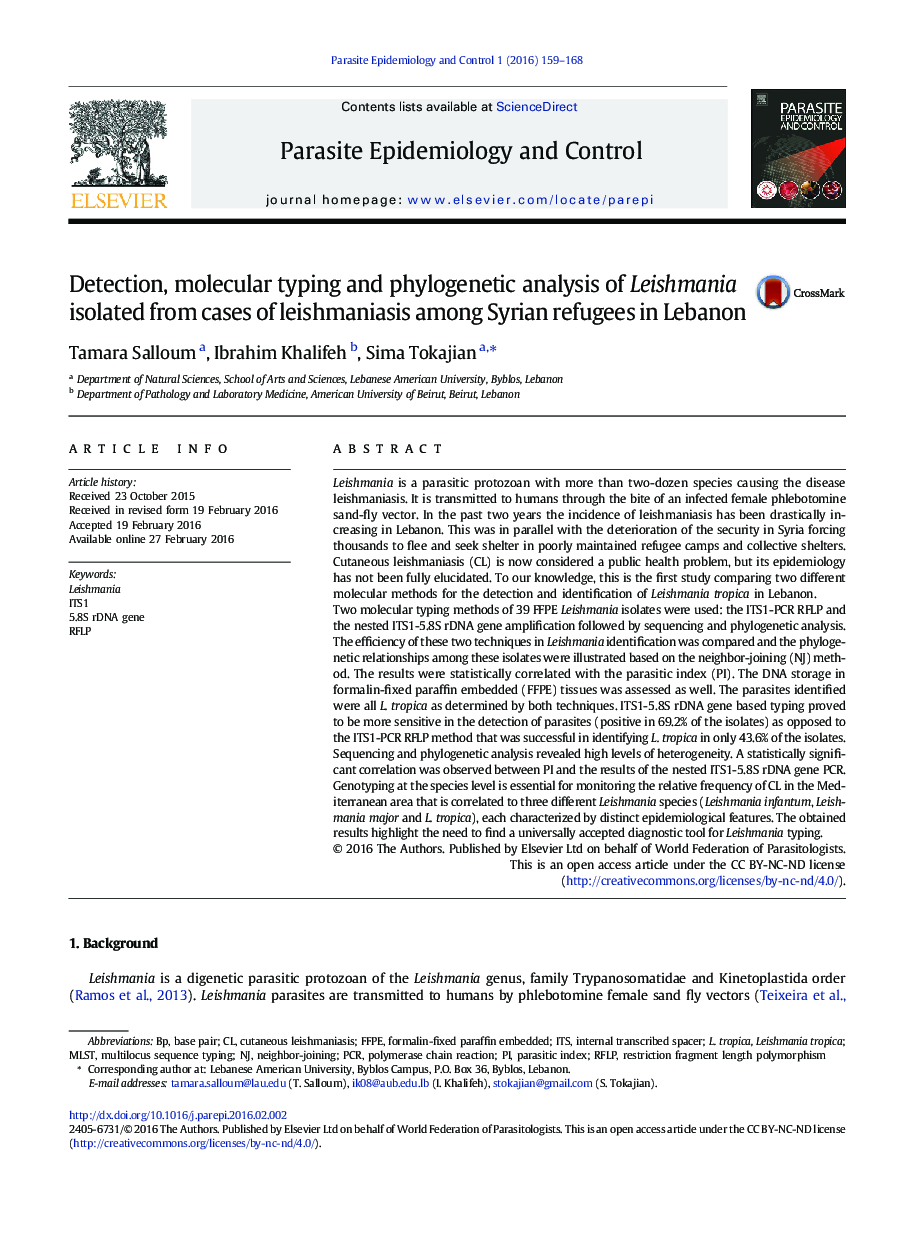| Article ID | Journal | Published Year | Pages | File Type |
|---|---|---|---|---|
| 2473682 | Parasite Epidemiology and Control | 2016 | 10 Pages |
Leishmania is a parasitic protozoan with more than two-dozen species causing the disease leishmaniasis. It is transmitted to humans through the bite of an infected female phlebotomine sand-fly vector. In the past two years the incidence of leishmaniasis has been drastically increasing in Lebanon. This was in parallel with the deterioration of the security in Syria forcing thousands to flee and seek shelter in poorly maintained refugee camps and collective shelters. Cutaneous leishmaniasis (CL) is now considered a public health problem, but its epidemiology has not been fully elucidated. To our knowledge, this is the first study comparing two different molecular methods for the detection and identification of Leishmania tropica in Lebanon.Two molecular typing methods of 39 FFPE Leishmania isolates were used: the ITS1-PCR RFLP and the nested ITS1-5.8S rDNA gene amplification followed by sequencing and phylogenetic analysis. The efficiency of these two techniques in Leishmania identification was compared and the phylogenetic relationships among these isolates were illustrated based on the neighbor-joining (NJ) method. The results were statistically correlated with the parasitic index (PI). The DNA storage in formalin-fixed paraffin embedded (FFPE) tissues was assessed as well. The parasites identified were all L. tropica as determined by both techniques. ITS1-5.8S rDNA gene based typing proved to be more sensitive in the detection of parasites (positive in 69.2% of the isolates) as opposed to the ITS1-PCR RFLP method that was successful in identifying L. tropica in only 43.6% of the isolates. Sequencing and phylogenetic analysis revealed high levels of heterogeneity. A statistically significant correlation was observed between PI and the results of the nested ITS1-5.8S rDNA gene PCR. Genotyping at the species level is essential for monitoring the relative frequency of CL in the Mediterranean area that is correlated to three different Leishmania species (Leishmania infantum, Leishmania major and L. tropica), each characterized by distinct epidemiological features. The obtained results highlight the need to find a universally accepted diagnostic tool for Leishmania typing.
